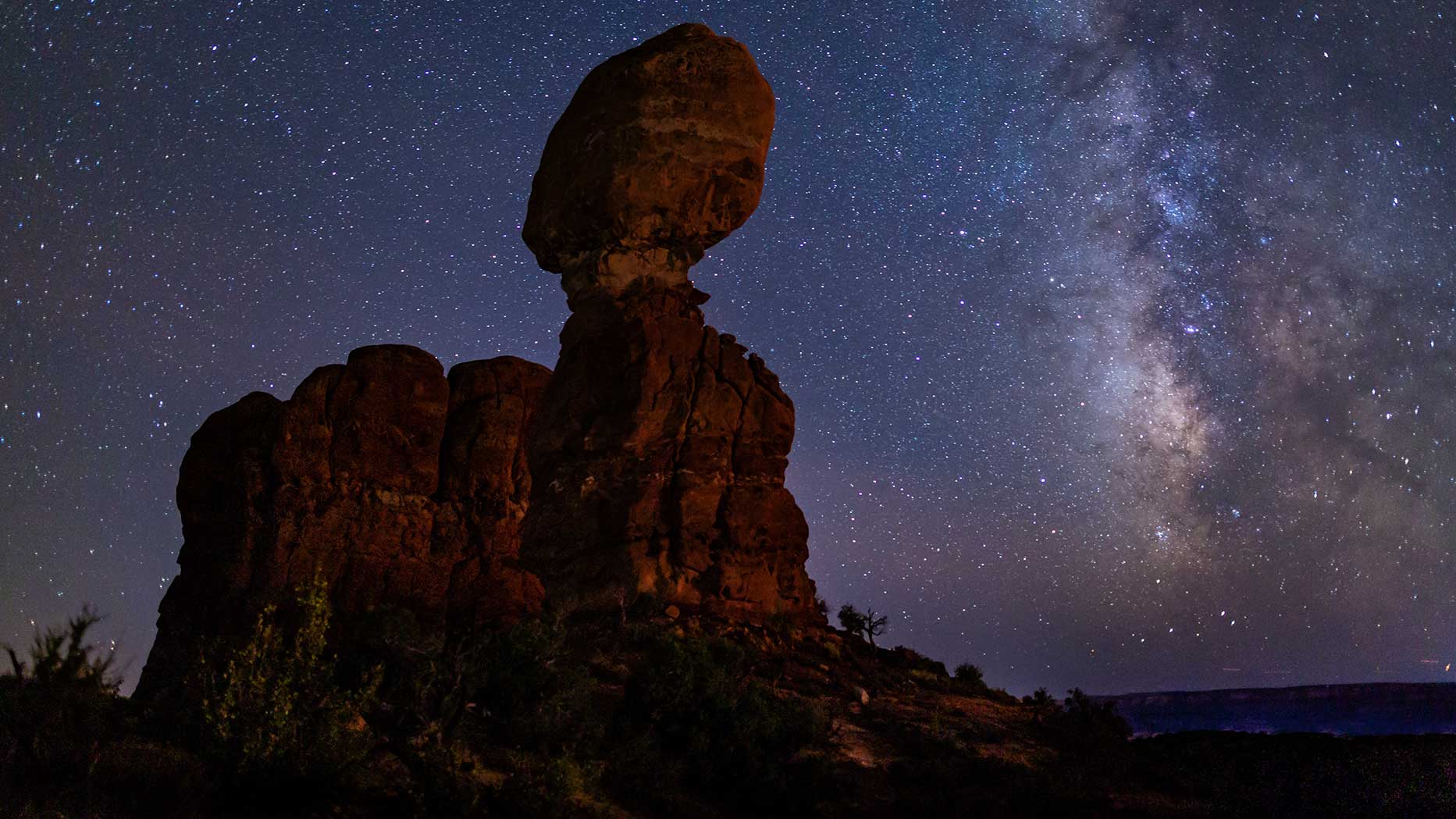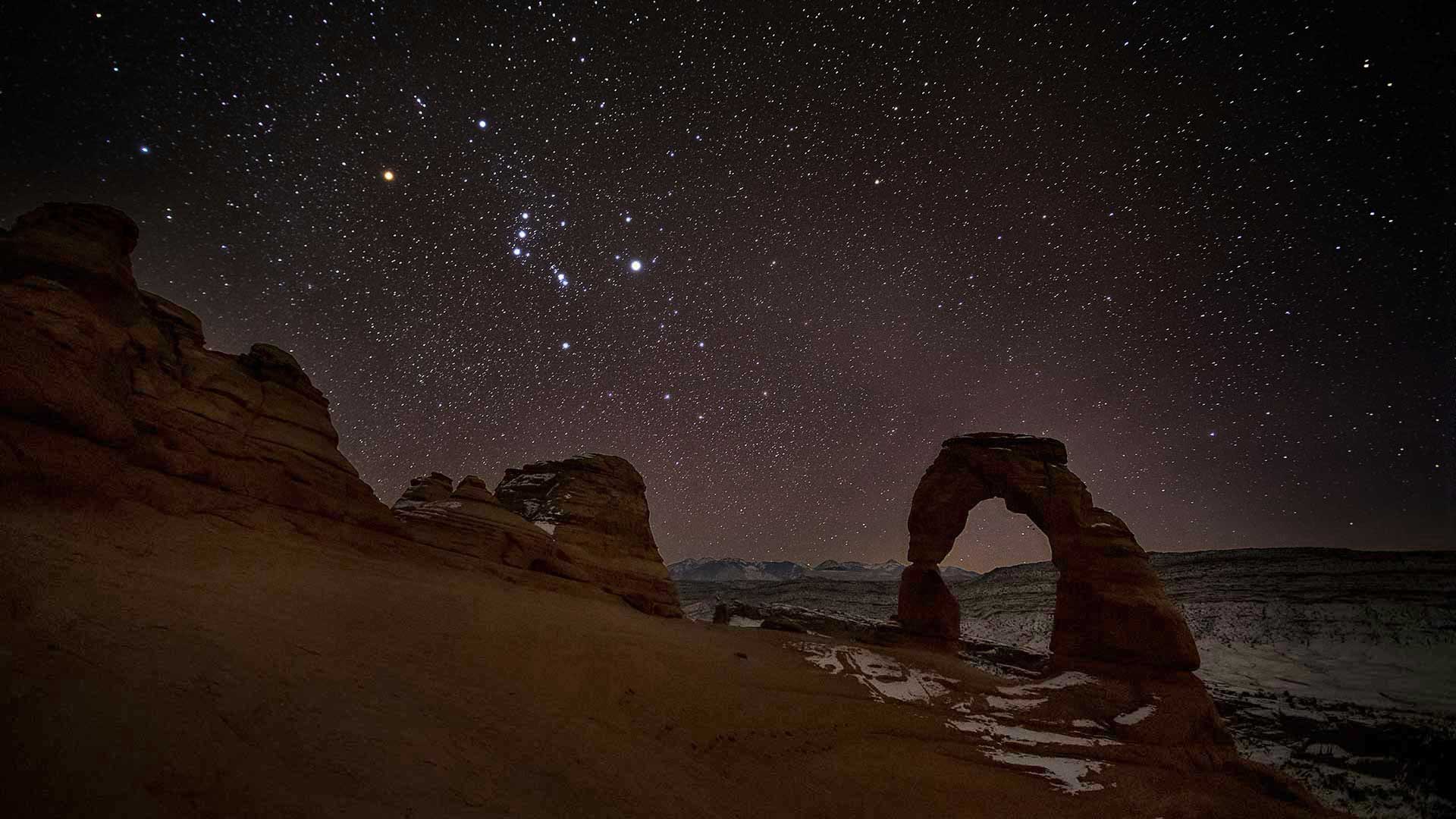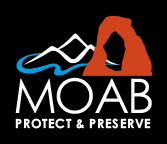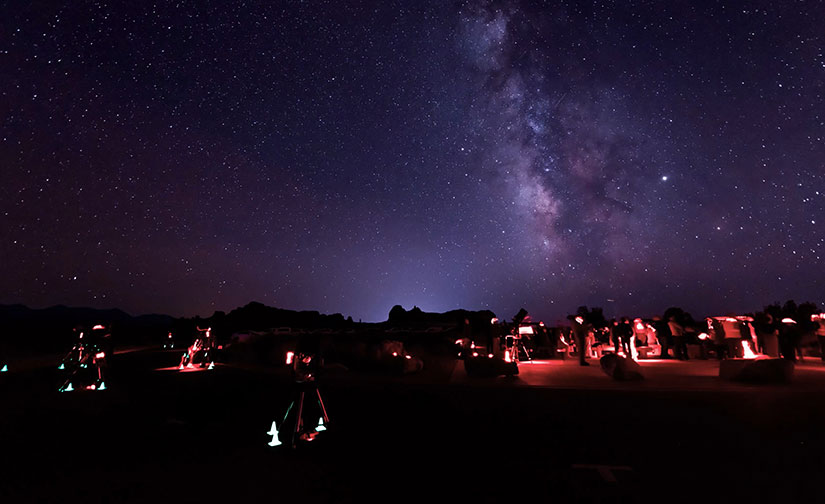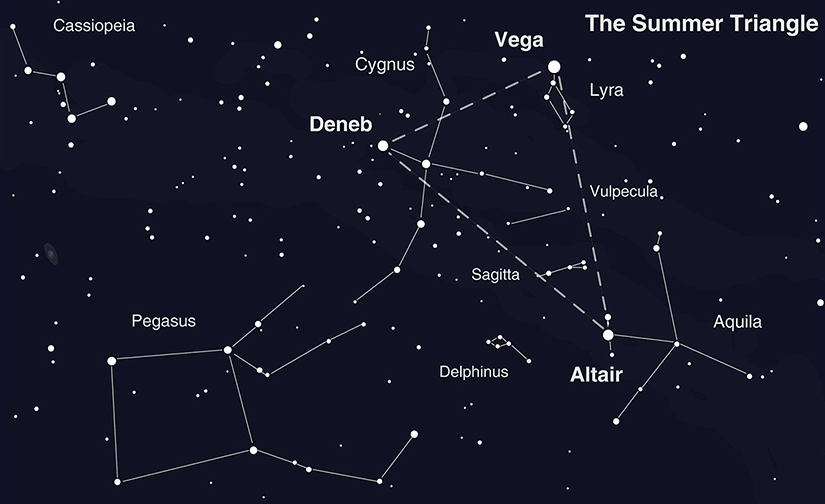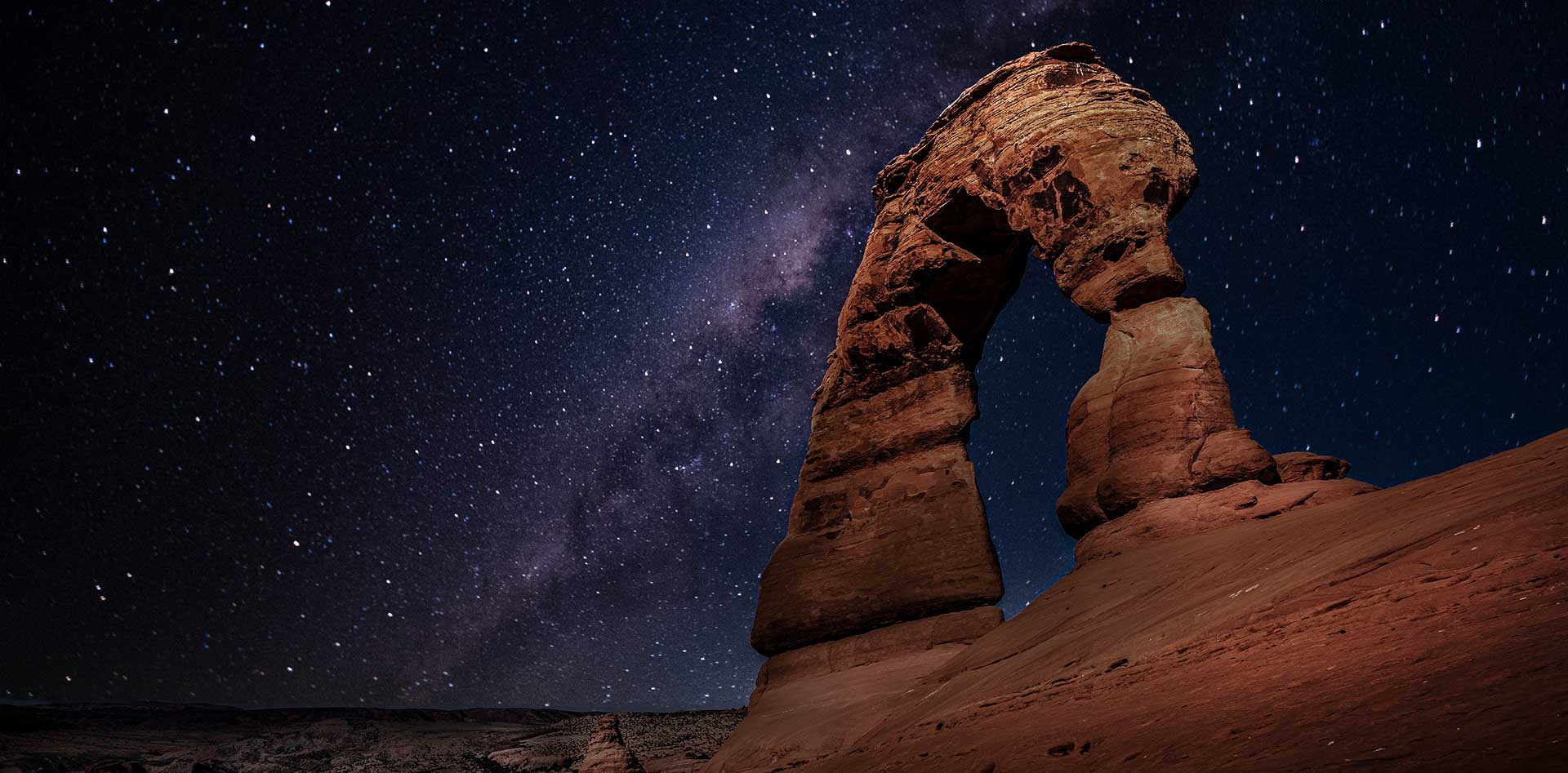
Summer Stargazing in Moab’s Dark Sky Parks

While you’re sure to experience epic views of unique rock formations and panoramic vistas during the day, these scenes set the stage for a completely different kind of breath-taking beauty at night. Here in the deep darkness of the desert, you’ll be able to escape the light pollution of cities and see more stars than ever before.
Utah currently has the most certified International Dark Sky Parks anywhere in the world, and the Moab area is proud to call three of them home. In fact, the public lands surrounding Moab have some of the darkest skies remaining in the contiguous 48 United States. Read on to get the full scoop on where to go and how to maximize your stargazing experience.
Where to View
As few as one in ten Americans live in areas where they can see the estimated 2,500 stars that should be visible under normal conditions, which means many visitors have never seen the Milky Way or experienced the splendor of a true star-filled sky. At the following Dark Sky Parks, the naked eye is sufficient to witness a wealth of stars. Under the right conditions, binoculars may even reveal the rings of Saturn!
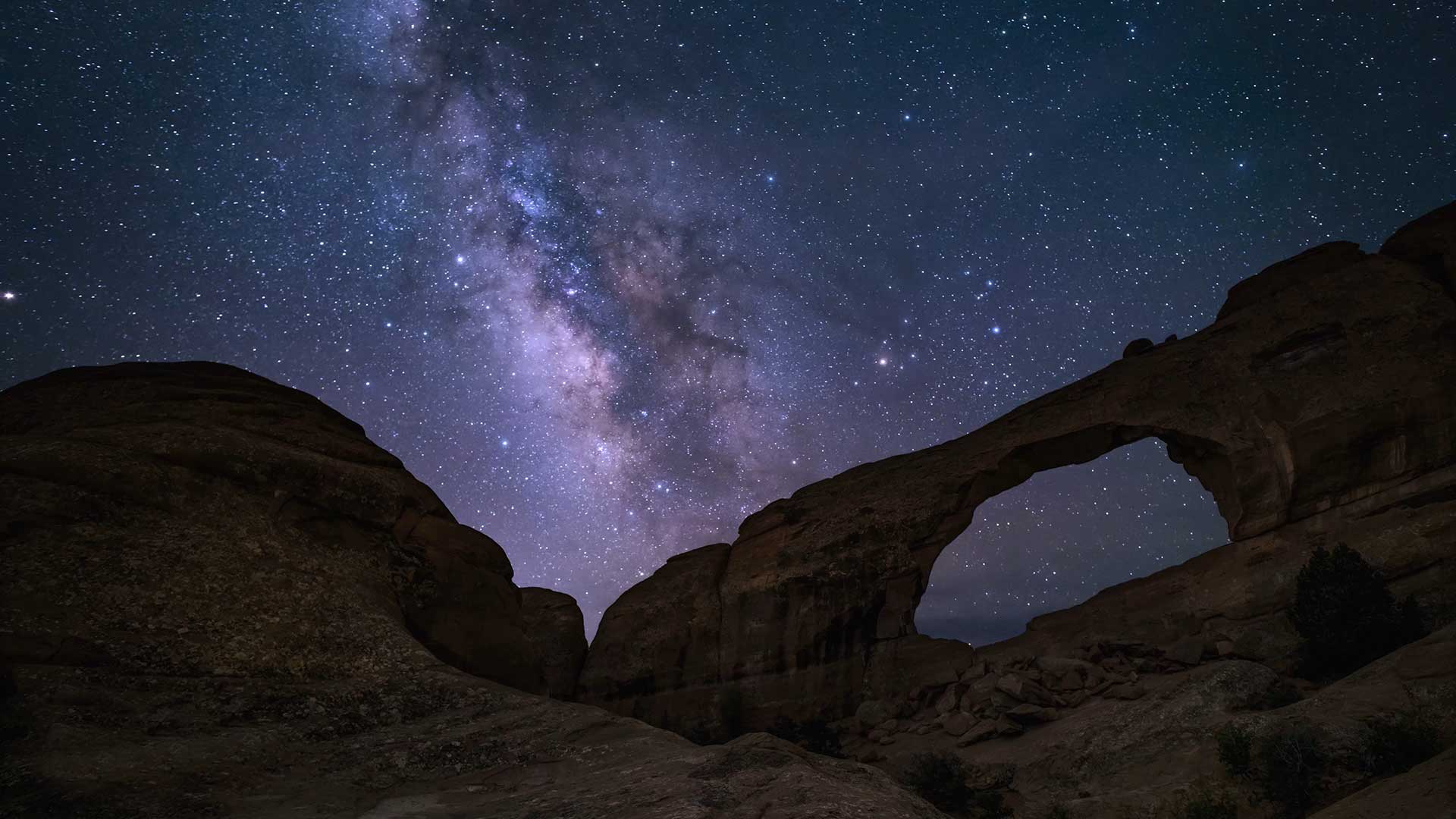
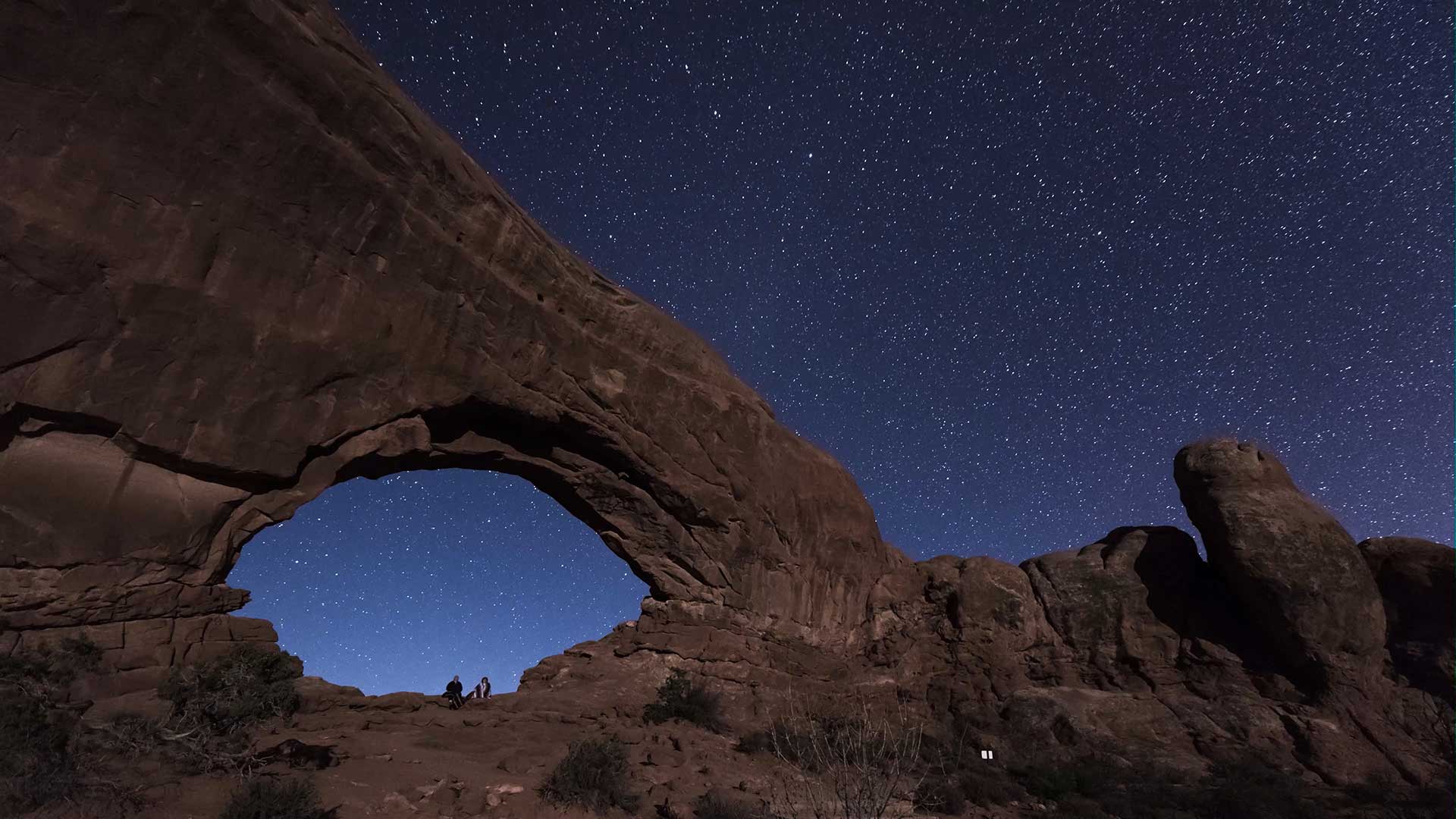
Arches National Park
Arches National Park received its International Dark Sky Park designation in 2019. On a clear night, you can see an incredible number of stars just about anywhere in the park. Areas off the main park road with few obstructions of the sky are best. A few easy-to-access options include Balanced Rock Picnic Area, The Windows, Garden of Eden Viewpoint and a dedicated stargazing area at Panorama Point. The farther north you drive away from the lights of Moab, the darker the sky will be. Be sure to check at the visitor center for more information and to find out about opportunities to attend ranger-led stargazing events and programs.
Canyonlands National Park
Night skies at Canyonlands National Park are so pristine the International Dark-Sky Association designated Canyonlands as a Gold-Tier International Dark Sky Park in 2015, which is the highest designation for darkness. Efforts to preserve natural darkness at Canyonlands began several years ago with a focused effort to revamp and replace lighting with "night-sky friendly" bulbs and fixtures. Today, nearly 100 percent of the lights in the park are "night-sky friendly." Visitors enjoy attending night sky programs at the Island in the Sky and Needles districts, where rangers use story-telling and telescopes to showcase the wonders of the universe.
Dead Horse Point State Park
Dead Horse Point State Park, the first Utah state park to be recognized as an International Dark Sky Park in 2016, is one of the most active and accessible areas to stargaze in the Moab area. Its high plateau location, mountains far in the distance and cities out of sight, yields a nearly full view of the celestial sphere. Park staff routinely provide after-dark programs celebrating the night sky, from hikes under the full moon to gazing through telescopes at objects millions of light years away. Whether you want to enjoy by yourself or join a ranger, Dead Horse Point State Park is a premier spot to see the night skies at their best.
What to Look for
- The Milky Way: The central part of the Milky Way, also known as the galactic core, can be seen shining brightly in Utah over the summer months, from March to November.
- March–May: The galactic core doesn’t become visible until a few hours before sunrise.
- June–August: The Milky Way is easily viewable any time after the sun sets.
- September–November: The early evening is the best Milky Way viewing opportunity during these months.
- Perseids Meteor Shower: One of the most popular meteor showers of the year due to its midsummer appearance, the Perseids are visible from the northern hemisphere July 14 to September 1. This year’s shower is predicted to peak August 12–13, which will provide a particularly good viewing opportunity as the moon will only be 10% full. The best time to view is before dawn, when you could see a rate of 50–75 meteors per hour!
- The Summer Triangle: Made up of a few of summer’s brightest stars, the Summer Triangle can help you identify three separate constellations. Look for the most attention-grabbing star in the eastern sky to locate Vega, which is the brightest star in the constellation Lyra the Harp. Or trace a line from the two stars by the handle of the Big Dipper to find your way there. To the lower left of Vega is Deneb, the star that makes up the tail of Cygnus the Swan. To complete the triangle to the lower right of Vega, Altair represents the brightest star and head of Aquila the Eagle.
Stargazing Tips
- When to Watch: For the best viewing, plan to do your stargazing during a new moon (or within three days before or three days after) or when the moon is below the horizon. Even the slightest light from a thin crescent moon can make it more difficult to see the Milky Way and other faint stars and celestial objects. Check our Moon Phase Chart for dates, as well as sunrise and sunset times.
- Be Prepared: Despite hot temperatures during the day, the desert can still get chilly at night, even in the summer. Make sure your outing is comfortable and enjoyable by packing chairs, blankets, layers, and maybe even a warm drink.
- Allow Your Eyes to Adjust: It can take up to 20–30 minutes for your eyes to fully adjust to the dark, so spend enough time away from bright lights and without your phone to be able to take in as many stars as possible. For light, use flashlights or headlamps with a red-light setting, which won’t affect your night vision.
- View Responsibly: Please note that using artificial light sources to light up landscapes, rock formations, or other park features for photos or other purposes is prohibited. Artificial light sources may be used for personal route-finding or minimum impact camping only.
